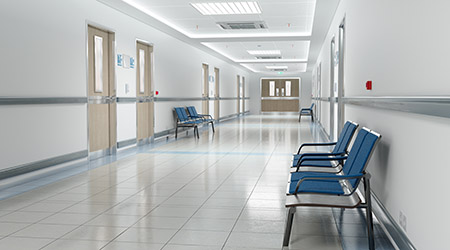Lighting is a critical component of healthcare facilities because it affects both providers and patients. It impacts occupants in many ways, including improving sleep, easing pain, improving adjustment to night shift workers, and elevating the mood and perception of staff and patients, according to Dodo Finance.
Being in the hospital environment can cause people to feel anxious and uncomfortable, and these feelings can lead to insufficient sleep. Lighting is helpful in such cases as it improves the sleep patterns of patients, making their recovery easier. Lighting also impacts those in healthcare settings by easing pain. It brings a sense of comfort, which can relieve a patient’s physical pain. It can even benefit the mental health of patients and providers.
Proper lighting also improves the adjustment to night shift workers such as janitors and guards, who provide important services to healthcare facilities in keeping them clean and safe. Healthcare facilities need good lighting to help night workers do their job.
Lighting also enhances the mood and perceptions among staff and patients. Providers are under a great deal of stress trying to provide patients with a good experience, while patients are undergoing stress due to their ailments. Lighting helps patients and providers to calm down so that healing can occur.
LED technology has become the preferred type of lighting for many healthcare facilities due to its energy efficiency, warmth and human-centric illumination, according to Tech Digest. There are different areas of hospitals that require lighting.
Waiting areas and hallways can give off a cold, detached feeling. To help patients who are likely dealing with pain and agitation, facilities need an effective lighting system that supports patient wellbeing. Stairways can be a challenge for those with poor eyesight. The proper illumination of these areas means few if any shadows.
Elevators are another part of hospitals that require good illumination. Since ceilings are fairly low, having incandescent lighting generates too much heat, which could require ventilation.

 Contaminants Under Foot: A Closer Look at Patient Room Floors
Contaminants Under Foot: A Closer Look at Patient Room Floors Power Outages Largely Driven by Extreme Weather Events
Power Outages Largely Driven by Extreme Weather Events Nemours Children's Health Opens New Moseley Foundation Institute Hospital
Nemours Children's Health Opens New Moseley Foundation Institute Hospital Code Compliance Isn't Enough for Healthcare Resilience
Code Compliance Isn't Enough for Healthcare Resilience Ribbon Cutting Marks First Phase Completion for New Montefiore Einstein Facility
Ribbon Cutting Marks First Phase Completion for New Montefiore Einstein Facility